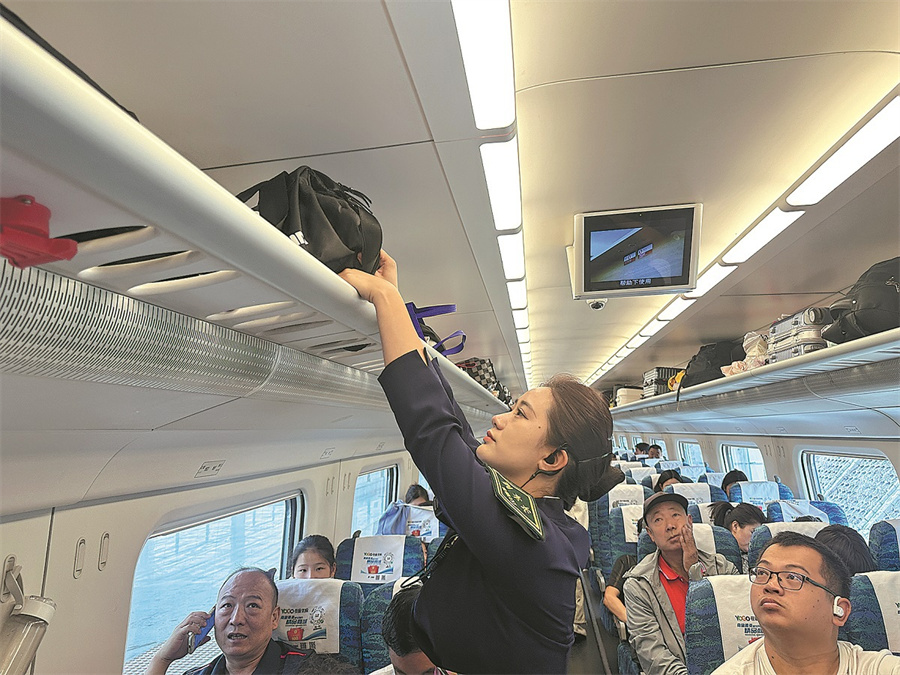A decade on, high-speed rail still delivering in western China

Ma Xueting serves passengers on a train on the Lanzhou-Urumqi High-speed Railway earlier this month. [Photo provided to China Daily]
Ma Xueting, 31, of the Hui ethnic group, born and raised in Qinghai, started working for the railway in October 2014, and is currently a train conductor of a Fuxing high-speed train.
When talking about the development in her hometown, she said she felt very proud. She feels honored to participate in the operation of the Lanzhou-Urumqi High-Speed Railway and witness the changes it has brought to her hometown.
Chinese people often say, "To get rich, first build a road". In the past, with the construction of roads, it became much more convenient for people to travel short distances. Now, with the high-speed rail network in place, distances of hundreds or even thousands of kilometers can be covered in a single day, she said.
"Our vast northwestern region spans great distances, with cities often hundreds of kilometers apart. Relying solely on roads can still pose many inconveniences," she said.
Qinghai's resources are extremely rich, not only with unique natural scenery and profound ethnic culture but also as a food paradise. However, due to inconvenient transportation, these rich tourism resources remained largely undiscovered. The railway has allowed millions of visitors to explore this region. Now, passenger trains run on the high-speed railway, with direct trains from Xining to 27 provincial capitals and municipalities, she said.
"Every summer, especially during the peak tourism season from June to September, there is a shortage of train tickets and accommodation in many counties," she said.
Ma Xueting said many of her relatives and friends have started working in tourism, with their annual income being quite good.
According to official statistics, since the opening of the Lanzhou-Urumqi High-Speed Railway, Qinghai has received a total of 340 million tourists. In that time, 337.36 billion yuan has been generated in tourism revenue, with an average annual growth rate of around 10 percent.
























